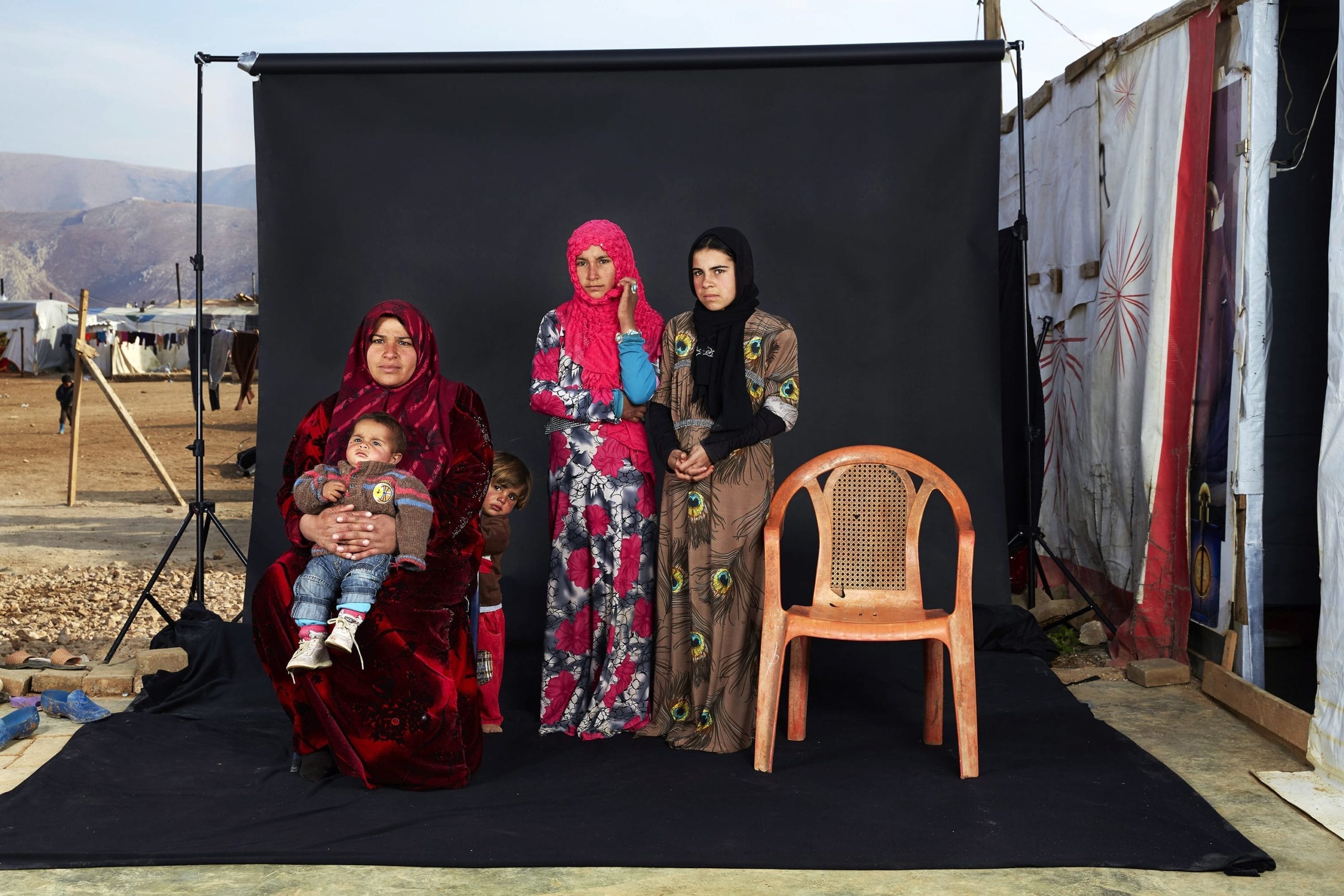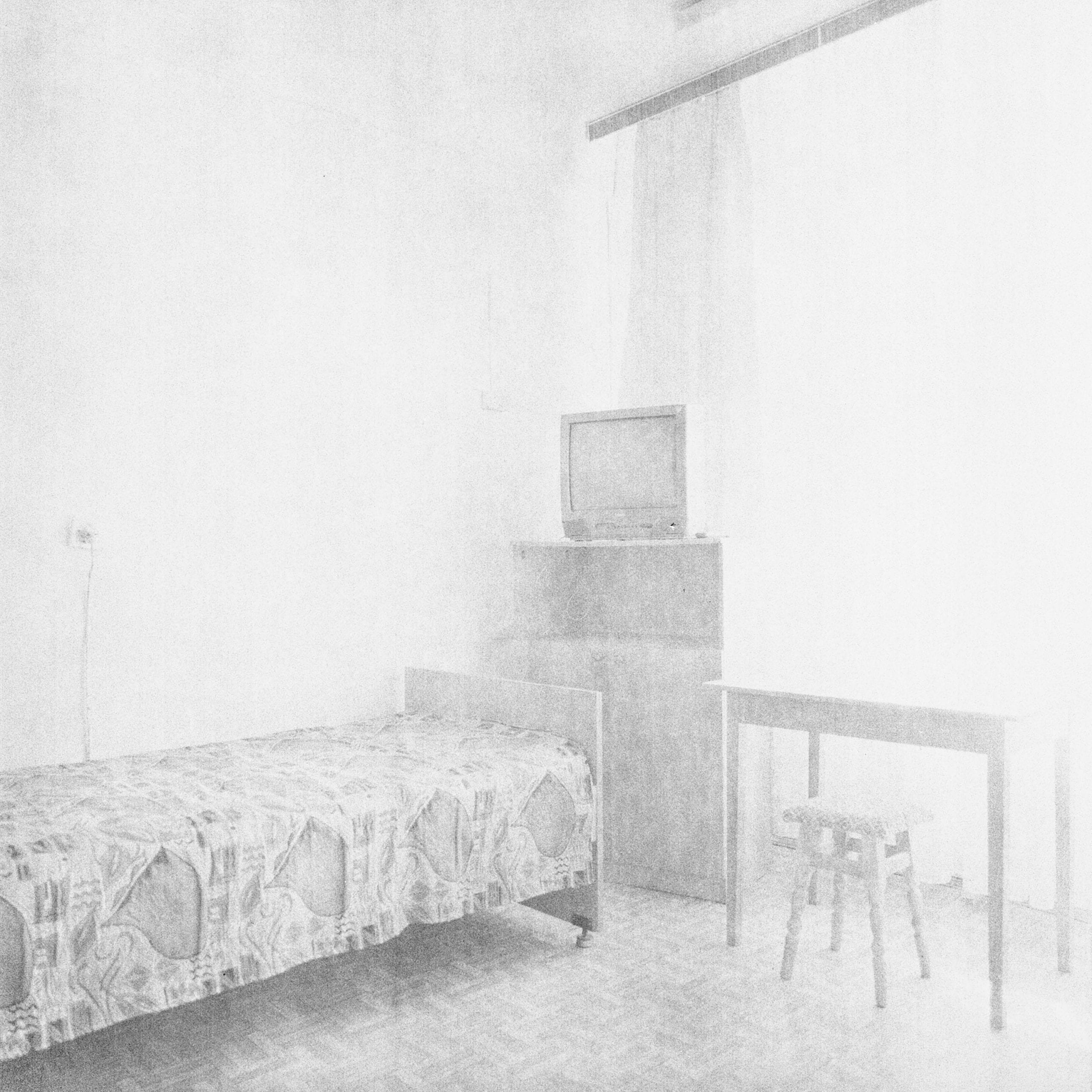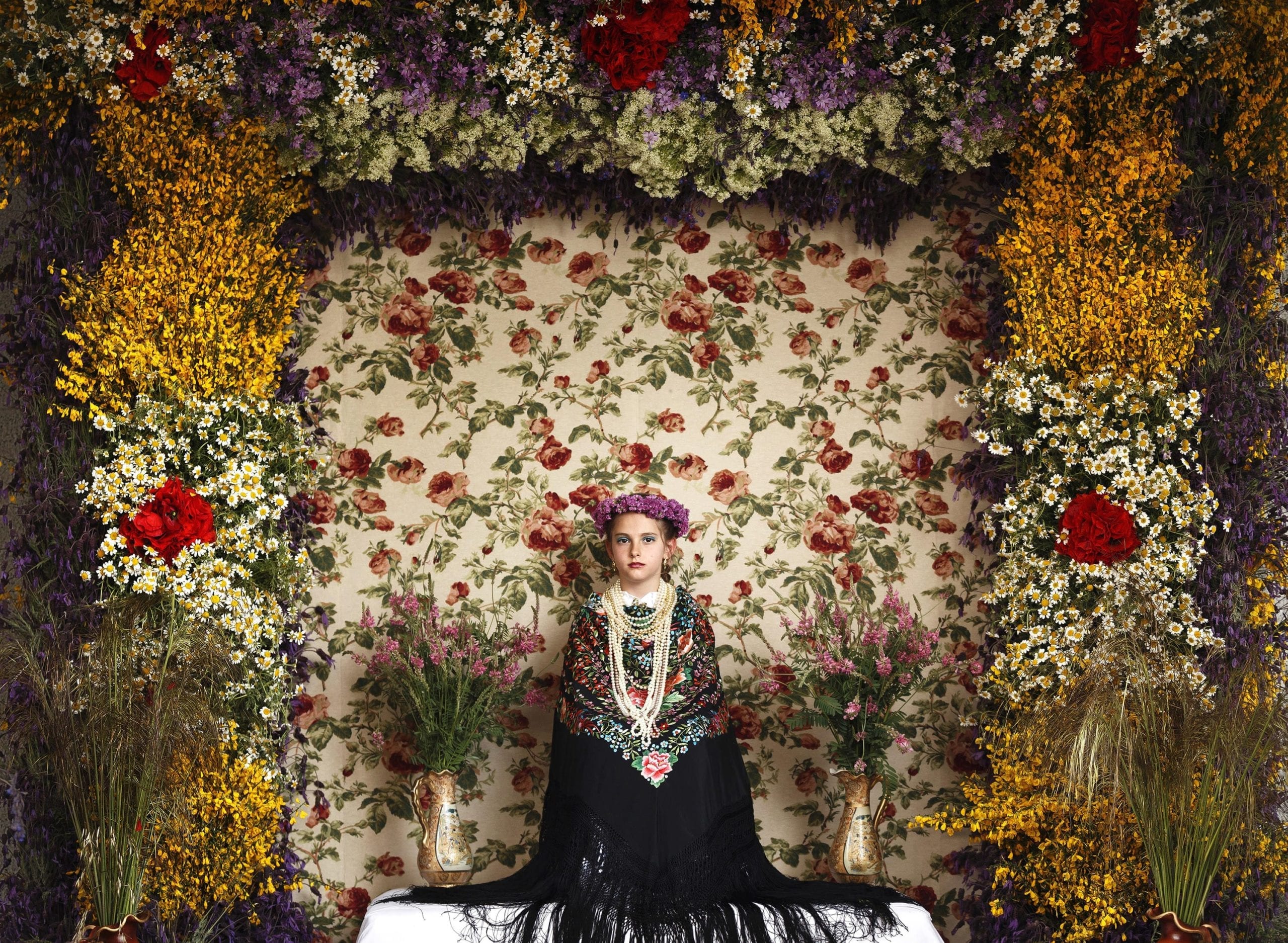 Lost Family Portraits © Dario Mitidieri
Two Slovenian photographers, Matic Zorman and Matjaz Krivic, win 1st and 2nd prize respectively in People singles. Zorman’s winning picture captures a child covered with a raincoat while she waits in line to register at a refugee camp in Serbia in October, while the Krivic picture is a portrait of a mine worker taking a smoke break before going back into the pit in Bani in Burkina Faso. The 3rd prize singles is one of the few examples of a photographer staging a scene in this year’s contest winners list. Dario Mitidieri’s image from his Lost Family Portraits was captured in a refugee camp in Lebanon. The empty chair in the photograph represents a family member who has either died in the war or whose whereabouts are unknown.
Lost Family Portraits © Dario Mitidieri
Two Slovenian photographers, Matic Zorman and Matjaz Krivic, win 1st and 2nd prize respectively in People singles. Zorman’s winning picture captures a child covered with a raincoat while she waits in line to register at a refugee camp in Serbia in October, while the Krivic picture is a portrait of a mine worker taking a smoke break before going back into the pit in Bani in Burkina Faso. The 3rd prize singles is one of the few examples of a photographer staging a scene in this year’s contest winners list. Dario Mitidieri’s image from his Lost Family Portraits was captured in a refugee camp in Lebanon. The empty chair in the photograph represents a family member who has either died in the war or whose whereabouts are unknown.
 “Symptoms became strong when I was 19 years old. I had a very strong heart beat and it accelerated. A normal rhythm is 60-70 beats per minute. Mine was beating at 120-130 and this caused a very strong tremor in my hands. I was studying to be an architect at the Architectural Department and I realised that the tremors were preventing me from working, preventing me from completing my course. I could not understand the reason. It was very scary because architecture requires special attention, special care, and I could not understand why I was producing bad work. That was something very frightening for me. It was terrible.” Image © Kazuma Obara, from the series, Exposure
The People stories winner is also more conceptual in nature. For his series Exposure, Japanese photographer Kazuma Obara returned to a 30-year old story – the Chernobyl disaster – through the memories of a girl born nearby five months after the nuclear power plant exploded. Daniel Ochoa de Olza, an Associated Press photographer from Spain, took 2nd prize with his extraordinary portraits of young girls aged between seven and 11 who are each year as ‘Maya’ for the ‘Las Mayas’ festival derived from pagan rites celebrating the arrival of spring in the town of Colmenar Viejo, Spain. He also won 3rd prize with a set of pictures taken at the impromptu memorials that appeared after the 13 November terrorist attacks in Paris, photographing the portraits of victims left at the sites as they became covered in rain drops. These pictures were subsequently withdrawn by his agency, who said that they had never distributed them in the first place, “because the originating photographers of the images had not given written permission for their use”. World Press subsequently awarded 3rd prize to Magnus Wennman’s series, Where Children Sleep.
“Symptoms became strong when I was 19 years old. I had a very strong heart beat and it accelerated. A normal rhythm is 60-70 beats per minute. Mine was beating at 120-130 and this caused a very strong tremor in my hands. I was studying to be an architect at the Architectural Department and I realised that the tremors were preventing me from working, preventing me from completing my course. I could not understand the reason. It was very scary because architecture requires special attention, special care, and I could not understand why I was producing bad work. That was something very frightening for me. It was terrible.” Image © Kazuma Obara, from the series, Exposure
The People stories winner is also more conceptual in nature. For his series Exposure, Japanese photographer Kazuma Obara returned to a 30-year old story – the Chernobyl disaster – through the memories of a girl born nearby five months after the nuclear power plant exploded. Daniel Ochoa de Olza, an Associated Press photographer from Spain, took 2nd prize with his extraordinary portraits of young girls aged between seven and 11 who are each year as ‘Maya’ for the ‘Las Mayas’ festival derived from pagan rites celebrating the arrival of spring in the town of Colmenar Viejo, Spain. He also won 3rd prize with a set of pictures taken at the impromptu memorials that appeared after the 13 November terrorist attacks in Paris, photographing the portraits of victims left at the sites as they became covered in rain drops. These pictures were subsequently withdrawn by his agency, who said that they had never distributed them in the first place, “because the originating photographers of the images had not given written permission for their use”. World Press subsequently awarded 3rd prize to Magnus Wennman’s series, Where Children Sleep.
 A ‘Maya’ girl sits in an altar during the traditional celebration of ‘Las Mayas’ on the streets of the small village of Colmenar Viejo, near Madrid, Spain Saturday, May 2, 2015. The festivity of ‘Las Mayas’ comes from pagan rites and dates from at least the medieval age, appearing in ancient documents. It takes place every year in the beginning of May and celebrates the arrival of the spring. A girl between 7 and 11years is chosen as ‘Maya’ and should sit still, serious, and quiet for a couple of hours in an altar on the street decorated with flowers and plants, afterwards they walk to the church with their family where they attend a ceremony. Not more than four, or five girls are chosen as a Maya each year. © Daniel Ochoa de Olza
A ‘Maya’ girl sits in an altar during the traditional celebration of ‘Las Mayas’ on the streets of the small village of Colmenar Viejo, near Madrid, Spain Saturday, May 2, 2015. The festivity of ‘Las Mayas’ comes from pagan rites and dates from at least the medieval age, appearing in ancient documents. It takes place every year in the beginning of May and celebrates the arrival of the spring. A girl between 7 and 11years is chosen as ‘Maya’ and should sit still, serious, and quiet for a couple of hours in an altar on the street decorated with flowers and plants, afterwards they walk to the church with their family where they attend a ceremony. Not more than four, or five girls are chosen as a Maya each year. © Daniel Ochoa de Olza






